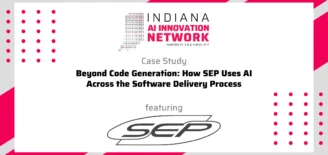How to get and maximize state incentives to help fund your start-up
Tax credits, training grants, and other state economic development incentives are usually in the news when they are going to the big guys — large employers who are bringing hundreds of new jobs and investing millions of dollars in the community. What you might not know is that many of those same incentives are available to small businesses and start-ups.
With a little bit of know-how and some long-term planning, you can secure incentives that are as good as cash to help you fund your business. And since fundraising is already hard enough as it is, anything that stretches a dollar and protects your personal share of equity should be welcomed with open arms by owners and entrepreneurs.

States IncentivesThe incentives process is complex, but definitely worth the effort.
As is often the case with legal and financial matters, hiring a professional to guide you through the state incentives process could make a big difference in the amounts you secure and dramatically increase your growth trajectory. It is always better to get professional help as early in the process as possible because some incentives are time sensitive and the rules governing them are strictly enforced.

See more photos from the Maximizing State Incentives Entrepreneur Bootcamp on Facebook.
What costs do incentives cover?
State incentives are negotiated on a case-by-case basis so they vary from company to company, but the cash-back from tax credits and training grants can specifically help you pay for things like:
● Hiring new employees
● Paying employee salaries
● Relocating new employees from out-of-state
● Reimbursing employee college tuition
● Sending employees to seminars and conferences
● Bringing a trainer on-site to your company
● Paying employee salaries while they are being trained or job-shadowed
While some things are covered and some things are not — food and lodging at a conference is covered, but alcohol is not — it is better to look at incentives as a revenue category similar to sales forecasts. For example, if you hire 20 new employees over 5 years and execute a specific training plan your company will receive cash to help offset those costs.
How do incentives work?
There are three key state economic development incentive programs that you should know about and pursue to help you fund your start-up.
1. EDGE Refundable Tax Credit
2. Skills Enhancement Fund (SEF)
3. Local Incentives
![]() EDGE Refundable Tax Credit — EDGE stands for Economic Development for a Growing Economy, and the state awards it to you based on the creation of new jobs, especially higher-wage jobs.
EDGE Refundable Tax Credit — EDGE stands for Economic Development for a Growing Economy, and the state awards it to you based on the creation of new jobs, especially higher-wage jobs.
Because it is a refundable credit, you actually get the value of the program as a tax credit. EDGE is also cumulative so your credit will get bigger every year as your headcount increases. If you don’t fully hit your goals, you still receive a portion of the incentives based on the percentage you do achieve. EDGE tax credits are usually paid out over 10 years.
![]() CAUTION: Do not make new-hire decisions before you have an EDGE credit in place. These are incentives not rewards, so the state is not going to reimburse you for people you have already hired.
CAUTION: Do not make new-hire decisions before you have an EDGE credit in place. These are incentives not rewards, so the state is not going to reimburse you for people you have already hired.
![]() Skills Enhancement Fund (SEF) — The SEF program covers 50% of qualified training costs for both new and retained jobs. SEF grants can be used for a wide variety of costs related to helping your employees acquire skills and knowledge. This applies to in-house training like job-shadowing, too.
Skills Enhancement Fund (SEF) — The SEF program covers 50% of qualified training costs for both new and retained jobs. SEF grants can be used for a wide variety of costs related to helping your employees acquire skills and knowledge. This applies to in-house training like job-shadowing, too.
Training is pretty liberally defined under this program, so if you aren’t using the full benefit, you aren’t trying hard enough. Most start-ups need the very best sales team they can afford, but you can also hire people with raw talent and help them acquire better sales skills through training.
![]() CAUTION: These grants only last for two years, so it is important to have a plan that accounts for long-term skills needs and training opportunities in order to utilize every last dollar available to you.
CAUTION: These grants only last for two years, so it is important to have a plan that accounts for long-term skills needs and training opportunities in order to utilize every last dollar available to you.
![]() Local Incentives — Local economic development organizations, counties, cities and sometimes regions also offer incentives like tax abatement, lease subsidies and Tax Increment Financing (TIF). These are usually negotiated at the same time as state incentives on a parallel track.
Local Incentives — Local economic development organizations, counties, cities and sometimes regions also offer incentives like tax abatement, lease subsidies and Tax Increment Financing (TIF). These are usually negotiated at the same time as state incentives on a parallel track.
Local incentives might not seem as flashy as state incentives, but locating your business on one street versus another can make a big difference if one building is within a TIF district.
![]() CAUTION: Don’t overlook the benefits of local incentives because your physical space impacts your effectiveness at recruiting the right talent that you need to help you advance to the next level.
CAUTION: Don’t overlook the benefits of local incentives because your physical space impacts your effectiveness at recruiting the right talent that you need to help you advance to the next level.
About the Authors
 Katie Culp is president of KSM Location Advisors, part of the Katz, Sapper & Miller Network. Previously, Katie led Cassidy Turley’s (now Cushman & Wakefield) national location advisory and incentives practice, working with corporate clients to make fully informed location decisions and maximize state and local incentives packages.
Katie Culp is president of KSM Location Advisors, part of the Katz, Sapper & Miller Network. Previously, Katie led Cassidy Turley’s (now Cushman & Wakefield) national location advisory and incentives practice, working with corporate clients to make fully informed location decisions and maximize state and local incentives packages.
 Tim Cook is the CEO of KSM Location Advisors. Tim works closely with companies across the country during the site selection process, assisting with identifying available sites, providing comparative analysis of qualified locations, and assisting in negotiating and securing economic development programs.
Tim Cook is the CEO of KSM Location Advisors. Tim works closely with companies across the country during the site selection process, assisting with identifying available sites, providing comparative analysis of qualified locations, and assisting in negotiating and securing economic development programs.


